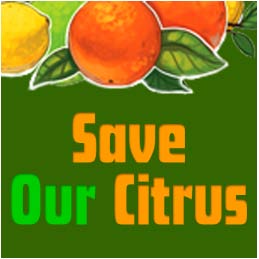Social Media Minute—January 2016
SOCIAL MEDIA MINUTE—January 2016 Edition
Do you have a farm or ag business that’s not engaged on social media yet? We want YOU to be on top of your social media game! We’ll be sharing tips and pointers to help you get started or improve promotion of your ag-related company through social media.
Today we’ll get you started with Facebook.
Definitions:
- Friend Page – a personal page for you to make friends of your own and connect with others
- Fan Page – a public page used to share updates for your farm, ranch, organization or company (these updates can be seen by everyone)
Step 1: Create a “Friend” Page or Log In
(1.1) First things first: Open your web browser and type facebook.com into the url bar at the top.
Before you can create what is known as a “fan” page for Facebook to post updates and promote your business, you are required to have a Facebook “friend” page.
Already have a “friend” page? Great! Go ahead, log into it and proceed with us. If not, continue with Step 1.2.
(1.2) Enter the required information and click “Sign Up.”
(1.3) Record your information and password in a secure place. Well now, that was easy enough!

Step 2: Create a “Fan” Page
This is the most important part! Once you’ve set up your “friend” page it will be time to develop a “fan” page. We’ll walk you step-by-step through the process.
First and foremost, across the top of your page, in the blue border, you’ll notice:
- your name
- a “home” button
- a few other buttons.
- a little arrow, all the way to the right.
(2.1) Click the little arrow.
The pop up menu that appears next should read, “Create Page” at the top. Don’t worry if it looks different than the sample page (at left) because this was previously created.
(2.2) Click on “Create Page” to continue creating your “fan” page.
Step 3: Select the Type of “Fan” Page
At this point, you’ll be prompted to select the type of page. You have the following options:
For the purposes of this tutorial we are going to create a “Company, Organization or Institution” page. No matter what you choose, the overall appearance will generally be the same.
Definitions, for our purposes:
- Local Business or Place – A location or business such as a bar, restaurant or retailer. This page allows you to define your business hours and price range of products sold. Ideal for fruit stands.
- Company, Organization or Institution – Ideal for companies, businesses or organizations that don’t need to publicize work hours or prices to the public. Examples could include: CDFA, California Ag Today, Fresno County Farm Bureau.
- Brand or Product – A specific product, service, organization or campaign you want to promote with trademark or distinctive name, aside from your corporate identity. This page could garner a lot of attention for a specific crop, such as Wonderful® Halos® California Mandarins or Cuties Mandarins.
- Public Figure – A politician, community leader, reporter, or person of note within the community.
- Entertainment – (not a likely choice)
- Cause or Community – A page to rally for someone suffering from health issues, a family needing help after a tragic accident… Aka pages to rally to help those in the community in need of help.
(3.1) Click on the “Company, Organization or Institution” icon (or another category that works best for your business). You will be prompted for information.
In this case. we were asked to (3.2) “Choose a Category” and (3.3) enter the company name. For this tutorial, we selected “Farming/Agriculture” as our category and named our mythical company “Calagtoday’s Social Media Farm.”
(3.4) Select “Get Started.”
Step 4: Setting up your “Fan” Page
Now you will be directed to enter more information. The first page will ask you (4.1) to enter a brief sentence or two about your page. We described our mythical business as, “Calagtoday’s Social Media Farm page is about teaching people how to use social media to promote their ag businesses.”
(4.2) We connected it to the californiaagtoday.com website in the next field, and (4.3) entered our Facebook web address or link as, “calagtodaySMfarm” for people to find our page.
(4.4) Once you’ve saved that information you’ll move on to selecting a profile picture.
All profile pictures have a 1:1 ratio, which means they are squares. Keep this in mind so you select a picture or logo that fits properly in your profile box. We took our basic graphic square “CalAgToday” logo and added “Social Media Farm” to it for use as our profile picture.
Our picture was on our computer, so (4.5) we selected “Upload From Computer” to get it onto Facebook.
(4.6) Your next choice is whether or not you’d like to add your page to your “favorites”—making it easier to find your page on your Facebook home page instead of having to scroll. This becomes extremely useful as you join more Facebook groups and administrate more of your own pages.
Once you’ve made the decision on whether or not you want your page to be accessible in your “favorites” menu [Click on “Add to Favorites”] or not [Click “Skip”] you’ll be prompted (4.7) to narrow your audience. You can choose the location of the audience you’d like to target, the age range, gender and interests. We simply chose to our audience to be those who are interested in “agriculture,” but you can select additional audience interests.
(4.8) After you’ve completed all of these steps, click “Save.”
Step 5: The “Almost” Finished Page
Congratulations! You’ve completed the basic steps to create a “fan” page for your ag-related business.
For now, though, pause and admire your work. You’re on the way to advocating for agriculture. Facebook is the first step in the social media puzzle, yet it has the largest audience compared to all other social media pages.
We’ll cover the remaining steps required prior to posting content on your page in our next “Social Media Minute.”
Stay tuned . . .

























